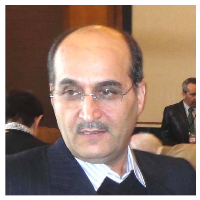Evaluation of methods estimating overland/streamflow travel-times for predicting flood hydrograph based on PGIUH model (Case Study: Amameh Watershed, Tehran Province)
The hydrograph shape, volume, peak discharg, and time to peak are important factors that should be considered in flood prediction and surface - water management problems. Rainfall and watershed characteristics affect runoff, and thus, hydrograph aspects. Numerous models have been developed to estimate hydrographs based on a variety of parameters. The PGIUH model is a geomorphologically - based model that has a probabilistic structure applying Strahler ̓s stream ordering scheme and Horton's laws and overland/streamflow travel times of different overland/stream orders to predict hydrographs. In the hydrological literature, the watershed response time to the rainfall is commonly characterized by the concepts including " time of concentration", "lag time", and"travel time", and the latter is applied in the PGIUH model to refer to the time it takes water to travel from one location to another; both on overland surfaces(overlandflow travel time) and in streams(streamflow travel time). .Different physically and empirically - based relationships have been developed to estimate travel time. Regarding the invariable probabilistic structure of the model, one can test the computational accuracy of the various travel time relationships based on the results of the model runs in comparison with observatory rainfall-runoff data The aim of this paper is to assess 10 travel-time relationships (5 overlandflow and 5 streamflow relationships) by comparing the estimated hydrographs with 10 observatory hydrographs in the Amameh watershed, located in the Alborz mountains, northern Iran. To reach the goal, some observatory hourly rainfall-runoff data of the watershed were obtained from two companies related to Iran ҆ s Ministry of Energy and 10 appropriate data were separated. For each of the runoff data, the total runoff ordinates were separated from the baseflow to derive the direct runoff hydrograph (DRH). Knowing the runoff depth produced by each event, the hourly effective rainfall amounts of that event were determined using the 𝜙-index, so that the total of all effective rainfall amounts of the whole rainfall duration would be equal to the runoff depth.On the other hand, the geomorphologic, topographic, and hydraulic paramaters needed to be used in the probabilistic structure and travel time relationships were obtained from the 12.5 m digital elevation model (DEM), the Google Earth satellite images and the previous papers regarding the study area. Different combinations of travel time relationships were applied at numerous model runs (One overlandflow plus one streamflow relationships at each run) to derive various IUHs. The hydrograph ordinates were obtained by multiplying the hourly effective rainfalls by the IHUs` ordinates and were compared with observed hydrographs statistically using such criteria as root mean square error (RMS), coefficient of efficiency (CE), error of peak discharge (〖Eq〗_p), and error of time to peak discharge (〖Et〗_p). The results showed that overlandflow travel-times did not contribute significantly in the hydrograph characteristics (in terms of peak flow, time to peak, and runoff volume), however, the effect of streamflow travel times, especially those related to the main stream has been decisive. This could be due to the short water flow paths, and thus, travel times on the overland surfaces, and consequently, least contribution of the overlandflow in the time of concentration at each event as opposed to the streamflow Also, no of the streamflow travel time relationships has simulated all the events accurately. Some of the relationships (the Bransby-Williams and the Gupta et al with gamma of 0.6 to 0.7 relationships) have estimated more frequent normal rainfall-runoff events more precisely wich is represented in better mean statistical results of the 10 simulations and some others (the Kirpich, Johnston-Cross, and the Gupta et al with gamma of 0.2 to 0.4 relationships) have done the same for more intense less repeated events with higher peak discharges.This is because various events result in different streamflow velocities, and thus travel times, and various relationships have estimated streamflow travel times, especially those of the main stream, differently. Also, the the types of parameters used in the relationships have affected the results The watershed area (A) parameter involved in the Bransby-Williams relationship has led to more accurate average results obtained from the simulation of 10 rainfall-runoff events and the effective rainfall intensity (i_e ) parameter used in the Lee et al relationship has, unlike other relationships, led some of both the more frequent low intensity and more intense higher discharge events to be as of its best estimations. It is concluded,thus, that not a single streamflow travel time relationship can best estimate all the rainfall-runoff events in the PGIUH model, however, there may be one relationship that can be best adapted to the mean hydroclimatological conditions in a watershed and lead to best mean statistical results among others. For more rare events, other relationships whose results are far from mean hysroclimatological conditions of the watershed can be applied
- حق عضویت دریافتی صرف حمایت از نشریات عضو و نگهداری، تکمیل و توسعه مگیران میشود.
- پرداخت حق اشتراک و دانلود مقالات اجازه بازنشر آن در سایر رسانههای چاپی و دیجیتال را به کاربر نمیدهد.



